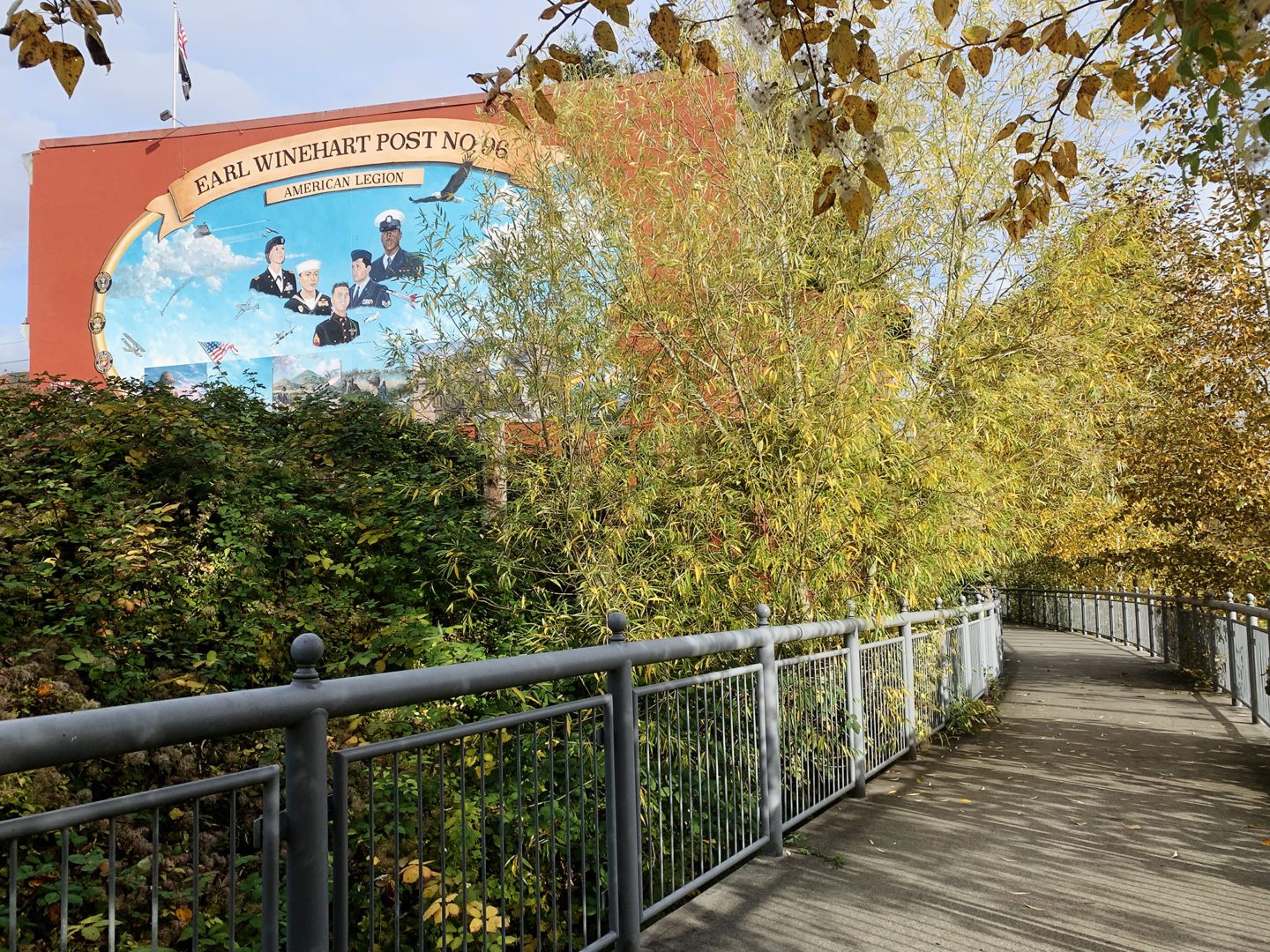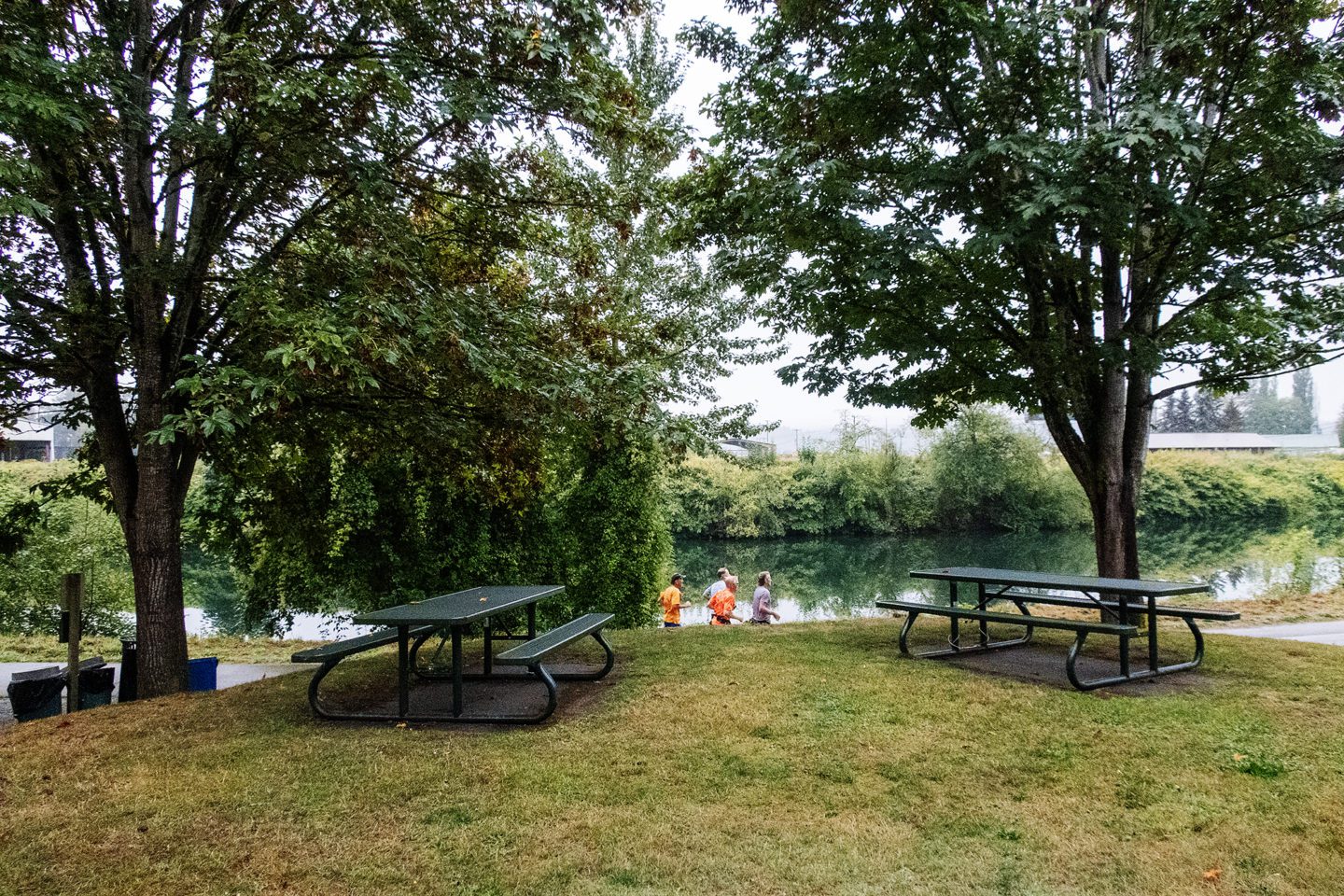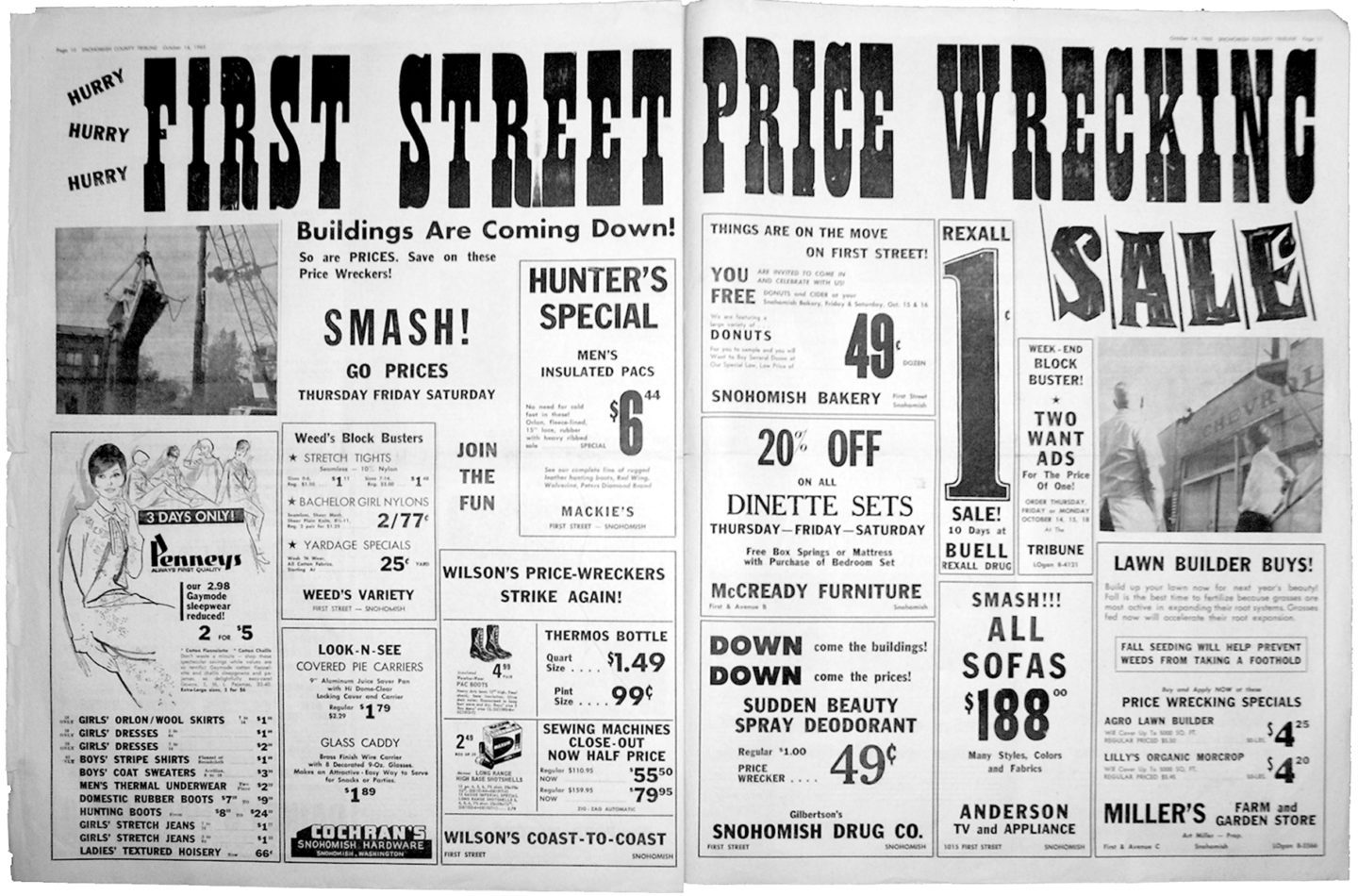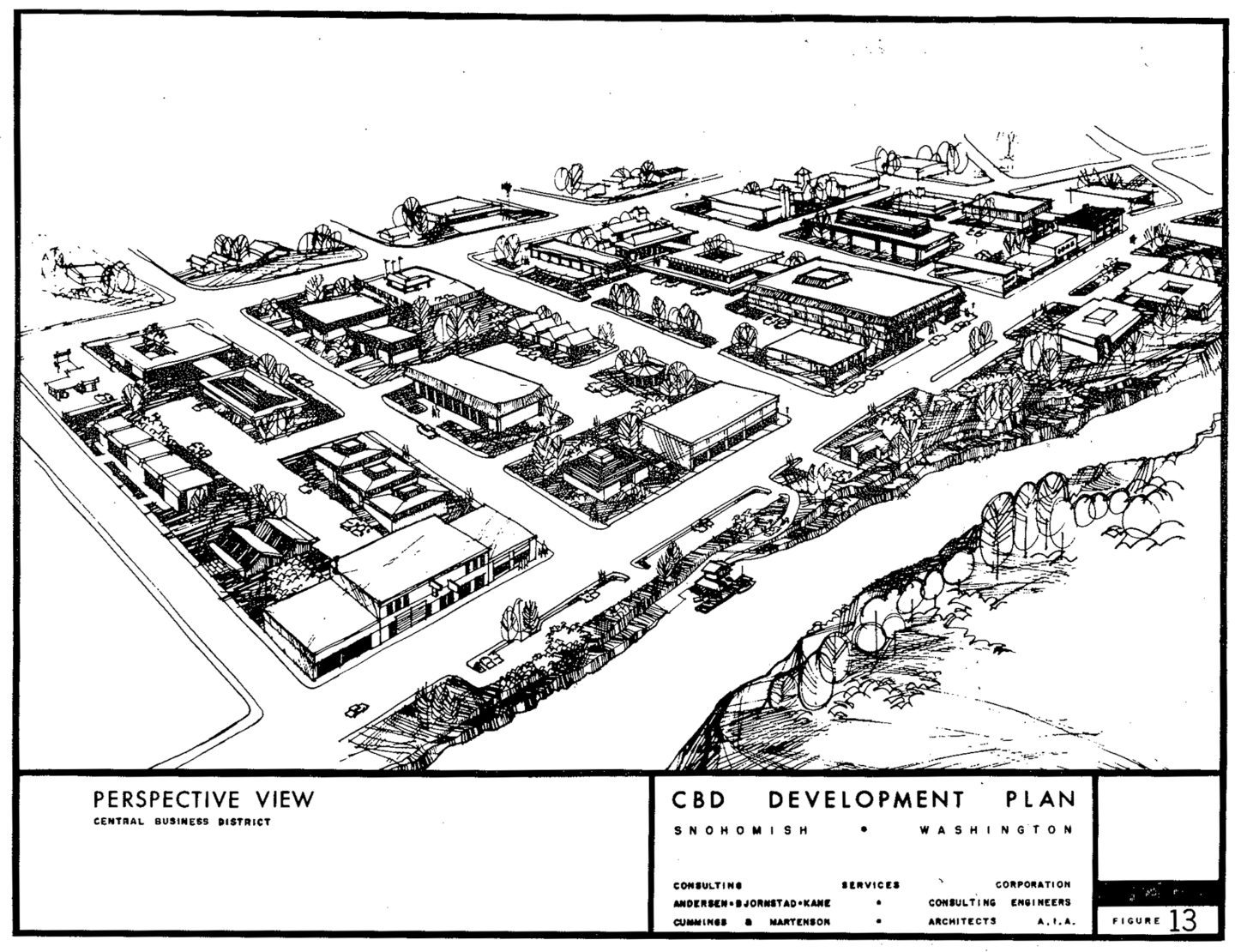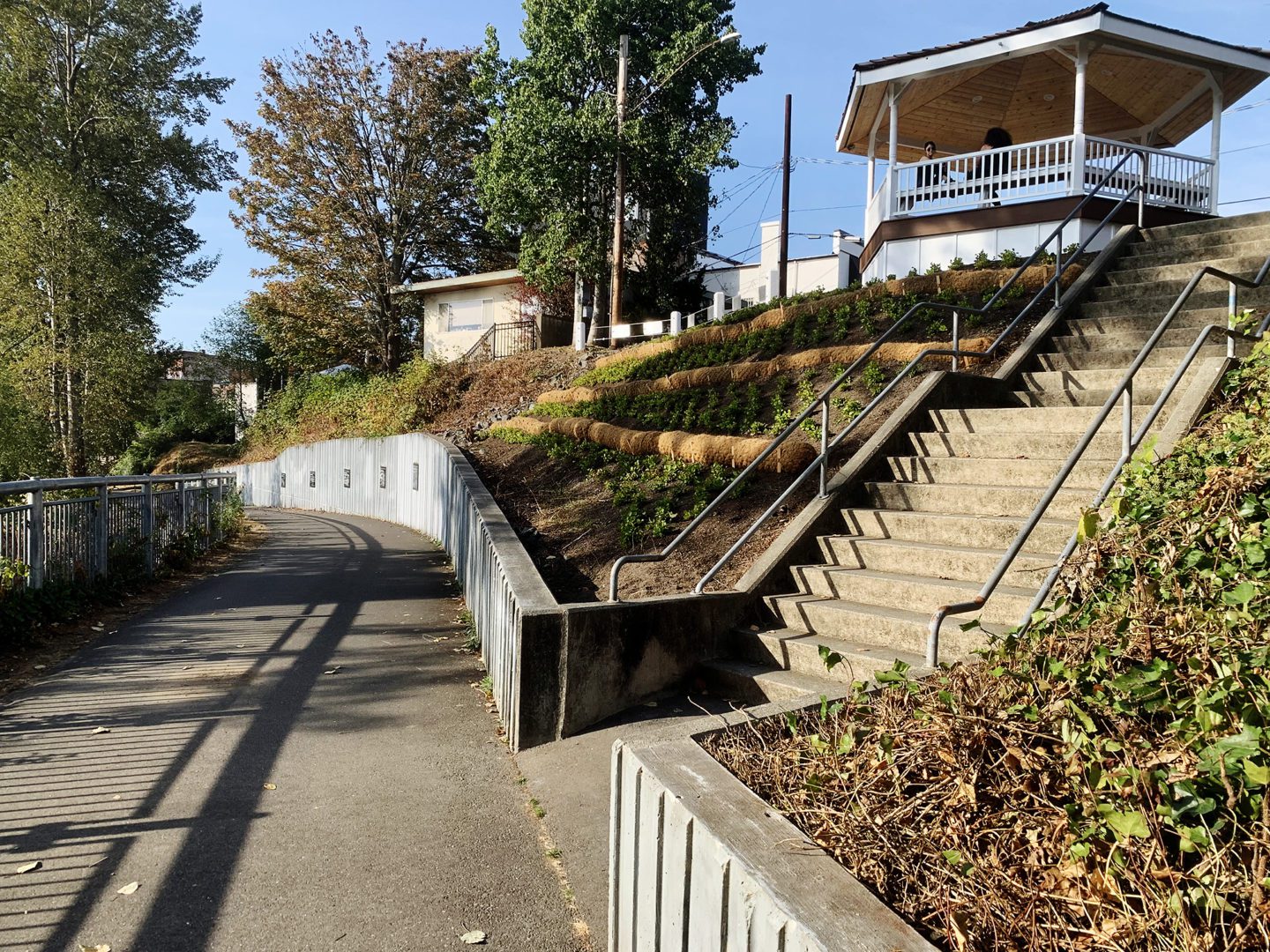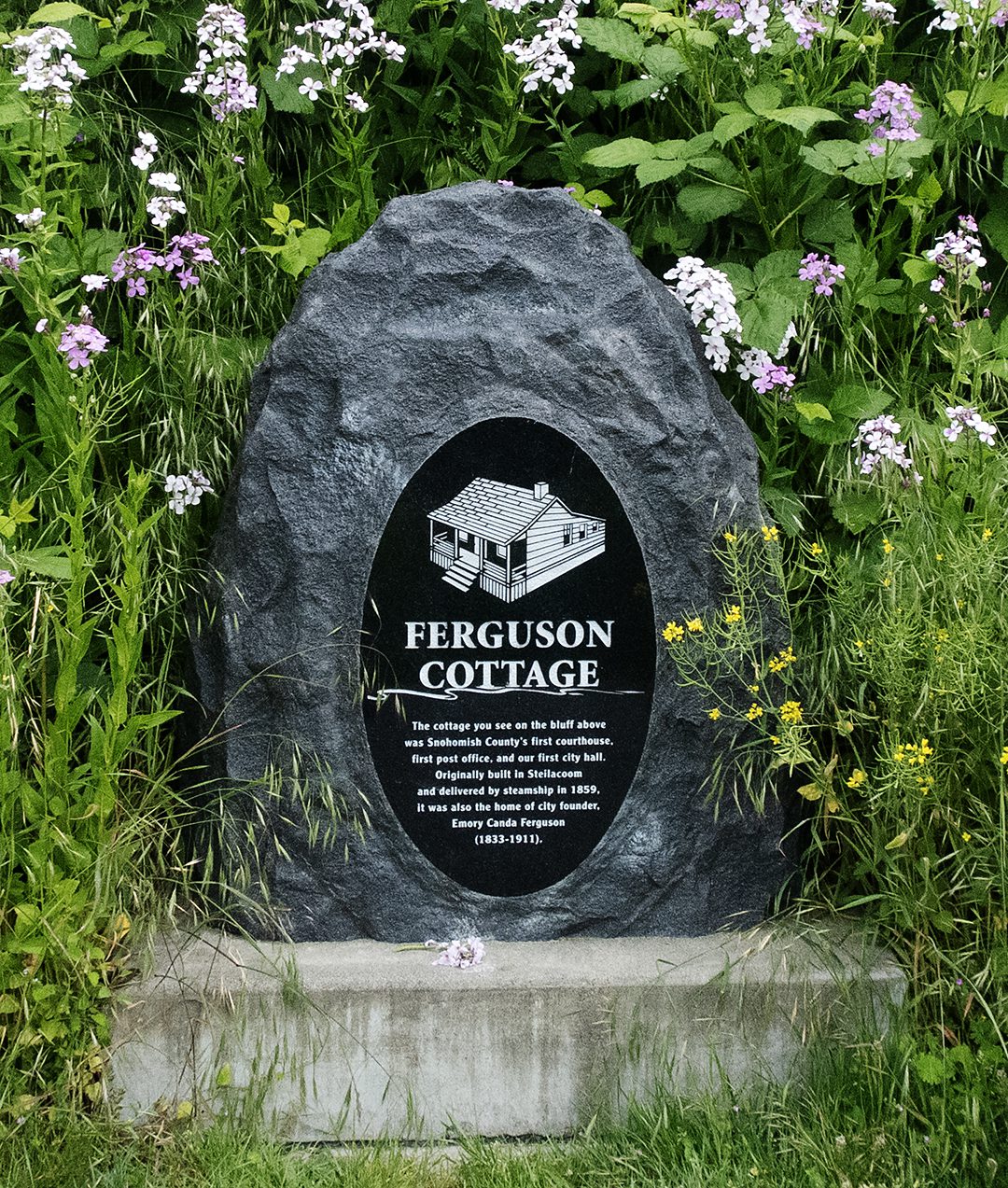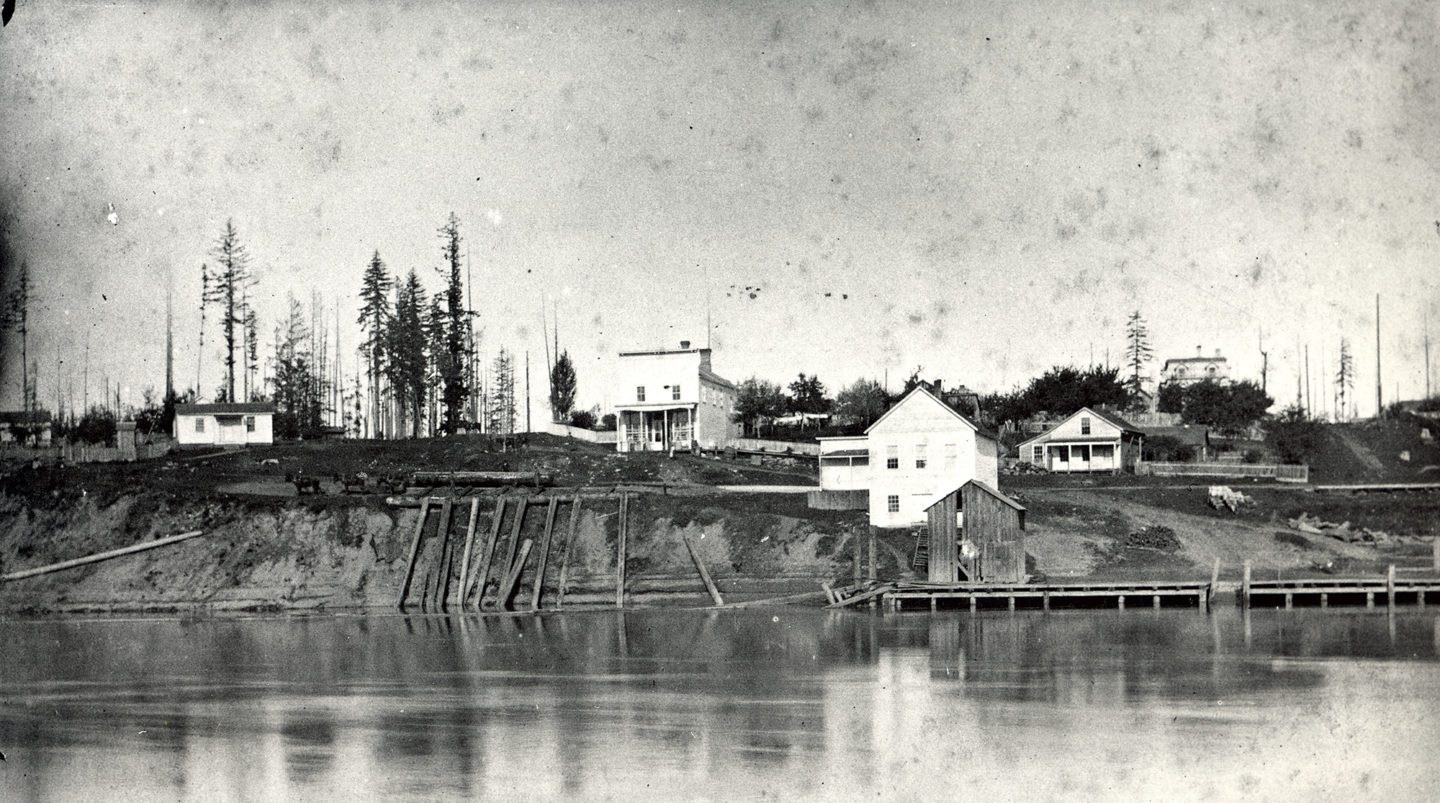-
Riverfront Trail
First Street and Avenue D
The Snohomish Riverfront Trail was dedicated in August 2010 with a design by Project Manager Ann Stanton to echo the route of the Milwaukee Road that came to town in 1911 on rails laid on a wooden trestle out over the river. The trail begins in the west at Avenue D and First Street, and ends at Maple Street in Cady Landing Park, less than a mile east. As you walk around the curve, passing the backside of the Wilbur Block offers an interesting view of the mural, but there is no evidence of when it was a depot. The park ahead is your first stop.
Kla Ha Ya Park — Long after the steamships disappeared, and the railroad trestle, abandoned for years, was finally torn down, only a row of brick storefronts remained. In the 1940s, the First Street showroom of an automobile dealership collapsed toward the river, its foundation compromised by continued flooding. The entire block of buildings on the south side of First, between Avenues B and C, was immediately condemned, yet it took 20 years before the abandoned buildings were demolished in October 1965. At the same time, the Snohomish Improvement Association, in coordination with the Planning Commission, was ready to present a plan for the renovation of downtown. Thanks to the flow of urban renewal funds at the time, Snohomish was able to commission a consortium of architects, engineers, and market researchers to develop a plan to put the “business” back in the Central Business District.
The plan called for removing even more of the buildings on the south side of First Street to open up the city to the river. And the remaining buildings were to undergo facelifts to give Snohomish the look of an up-to-date riverside shopping mall! Fortunately, Snohomish was too poor to seriously consider this tempting invitation to the 1960s prom of urban renewal. “Snohomish hasn’t sunk that low, yet,” wrote Bill Bates, editor of the Tribune. The park was created by volunteer labor and named after an Indian phrase that translates as “Welcome.”
Fly Loft on Brown Theater — As you continue east on the trail, stop to let your eye follow the trail up to see the black structure with large windows, looking like a watch tower above the trail. It replaced the fly loft of the historic Lon Brown Theatre – unpermitted work in the historic district! Once spotted, continue walking as the structure looms over you.
Avenue A Gazebo & River Overlook — Created in the 1980s with volunteer labor, the community’s treasured Gazebo was rebuilt by a local construction company as a donation in 2022. The staircase will take you to the Gazebo (and back to First Street). Overlooking the river, imagine over a hundred Indian canoes passing down the river from the hop fields, as told in The Eye on October 3, 1885. Or, not so long ago, the sight of the river jammed with logs, bank-to-bank, with the “drivers” dancing between logs. For over 130 years, lumber mills have operated on the John Harvey claim on the south side. Now it’s a rental site, while waiting for a new owner. On the other hand, its neighbor, the Harvey Airfield, founded in the 1940s, is eager to expand. Continue east to the Ferguson Cottage granite marker.
Ferguson Cottage — In 1859, Emory C. Ferguson (1833-1911), only 26 years old, was working with a group of wide-eyed businessmen in Steilacoom looking for an opportunity to cash in on the planned military road to Fort Bellingham. Their idea was to establish a ferry service where the imagined road was to cross the Snohomish River. However, funds and troops were diverted to support the Civil War, and the military road ended as barely a path at the river’s edge on the south bank. Ferguson settled here nevertheless and is considered the founder of Snohomish.
His home measures 16 feet across the front and 24 feet deep. Ferguson lived in the house, expanded to two rooms, for 20 years, and later in life told a reporter for the Everett Daily Herald, “It wasn’t a palace, but it was home sweet home to me for many a year, and I never have been happier than while I lived there.”
One of the first meetings Ferguson held in this place resulted in a petition to form Snohomish County, which took place in 1861. Later that same year, Ferguson led one of the first get-out-the-vote campaigns to win the election for the county seat over Mukilteo. The settler population was 49 men and no women. It can be said that his humble building with its grand perch overlooking the river was Snohomish County’s first courthouse.
The Ferguson Cottage was purchased, saved, and renovated by Rebecca Loveless in 1997. The structure, hidden behind the berry bushes, has been privately owned and occupied since that time. It is considered the oldest building constructed of milled lumber still standing in the county. It can be viewed only from this spot on the Snohomish Riverfront Trail.
Cady Landing Park, 40 Maple Avenue — Edson Cady, born around 1828, named this place when registering a post office, so it’s said; he didn’t stick around long enough to have the story take hold. In 1864, he sold his claim to John and Mary Sinclair and disappeared from the pages of history. The Sinclairs opened a store with their home in the back, and across the road, yet to be named Maple Avenue, was Ferguson’s Blue Eagle Saloon. In the 1950s, the Snohomish Sportsmen Club rigged a rudimentary boat launch for access to the river, improved upon over the years until 2021, when the Pilchuck Julia boat launch was dedicated upstream.
Railroad Bridge — The Seattle, Lake Shore, and Eastern Railroad Company was founded by Judge Thomas Burke and Daniel Gilman in 1885. The first train reached the south bank of the Snohomish River in July 1888, but it was not until September that the original trestle was completed. Barely months after it was operational, a span in the bridge gave way under pressure from a flood-caused logjam against the southernmost pier. One hundred years later, work began converting the historic right of way heading north as a rails-to-trail project, dedicated in 1989 as the Centennial Trail to commemorate the anniversary of Washington’s statehood. In Seattle, the converted right of way is called the Burke-Gilman Trail.
Through the 1930s, the hill back up to First Street was a “skid road” — a site for “skidding” logs into the river for an easy float downstream to the mill. To walk up is not easy; an alternative is to retrace your steps back to the Gazebo and use the stairs, which are also a nice workout.
At the top of the hill, you are on First Street. Turn around to see the view down the hill to the river as you rest, then walk east two doors.
